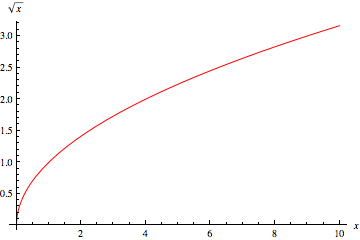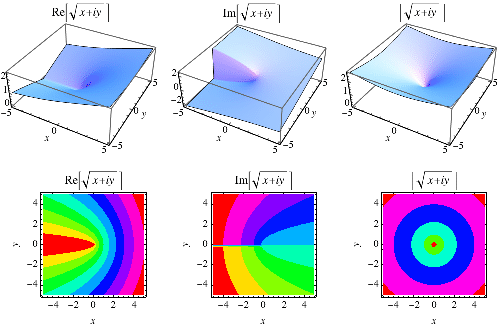

تاريخ الرياضيات

الاعداد و نظريتها

تاريخ التحليل

تار يخ الجبر

الهندسة و التبلوجي


الرياضيات في الحضارات المختلفة

العربية

اليونانية

البابلية

الصينية

المايا

المصرية

الهندية


الرياضيات المتقطعة

المنطق

اسس الرياضيات

فلسفة الرياضيات

مواضيع عامة في المنطق


الجبر

الجبر الخطي

الجبر المجرد

الجبر البولياني

مواضيع عامة في الجبر

الضبابية

نظرية المجموعات

نظرية الزمر

نظرية الحلقات والحقول

نظرية الاعداد

نظرية الفئات

حساب المتجهات

المتتاليات-المتسلسلات

المصفوفات و نظريتها

المثلثات


الهندسة

الهندسة المستوية

الهندسة غير المستوية

مواضيع عامة في الهندسة

التفاضل و التكامل


المعادلات التفاضلية و التكاملية

معادلات تفاضلية

معادلات تكاملية

مواضيع عامة في المعادلات


التحليل

التحليل العددي

التحليل العقدي

التحليل الدالي

مواضيع عامة في التحليل

التحليل الحقيقي

التبلوجيا

نظرية الالعاب

الاحتمالات و الاحصاء

نظرية التحكم

بحوث العمليات

نظرية الكم

الشفرات

الرياضيات التطبيقية

نظريات ومبرهنات


علماء الرياضيات

500AD

500-1499

1000to1499

1500to1599

1600to1649

1650to1699

1700to1749

1750to1779

1780to1799

1800to1819

1820to1829

1830to1839

1840to1849

1850to1859

1860to1864

1865to1869

1870to1874

1875to1879

1880to1884

1885to1889

1890to1894

1895to1899

1900to1904

1905to1909

1910to1914

1915to1919

1920to1924

1925to1929

1930to1939

1940to the present

علماء الرياضيات

الرياضيات في العلوم الاخرى

بحوث و اطاريح جامعية

هل تعلم

طرائق التدريس

الرياضيات العامة

نظرية البيان
Square Root
المؤلف:
Landau, S.
المصدر:
"Simplification of Nested Radicals." SIAM J. Comput. 21
الجزء والصفحة:
...
4-9-2019
2310
Square Root
 |
A square root of  is a number
is a number  such that
such that  . When written in the form
. When written in the form  or especially
or especially  , the square root of
, the square root of  may also be called the radical or surd. The square root is therefore an nth root with
may also be called the radical or surd. The square root is therefore an nth root with  .
.
Note that any positive real number has two square roots, one positive and one negative. For example, the square roots of 9 are  and
and  , since
, since  . Any nonnegative real number
. Any nonnegative real number  has a unique nonnegative square root
has a unique nonnegative square root  ; this is called the principal square root and is written
; this is called the principal square root and is written  or
or  . For example, the principal square root of 9 is
. For example, the principal square root of 9 is  , while the other square root of 9 is
, while the other square root of 9 is  . In common usage, unless otherwise specified, "the" square root is generally taken to mean the principal square root. The principal square root function
. In common usage, unless otherwise specified, "the" square root is generally taken to mean the principal square root. The principal square root function  is the inverse function of
is the inverse function of  for
for  .
.
 |
Any nonzero complex number  also has two square roots. For example, using the imaginary unit i, the two square roots of
also has two square roots. For example, using the imaginary unit i, the two square roots of  are
are  . The principal square root of a number
. The principal square root of a number  is denoted
is denoted  (as in the positive real case) and is returned by the Wolfram Language function Sqrt[z].
(as in the positive real case) and is returned by the Wolfram Language function Sqrt[z].
When considering a positive real number  , the Wolfram Language function Surd[x, 2] may be used to return the real square root.
, the Wolfram Language function Surd[x, 2] may be used to return the real square root.
The square roots of a complex number  are given by
are given by
|
(1) |
In addition,
![sqrt(x+iy)=1/2sqrt(2)[sqrt(sqrt(x^2+y^2)+x)+isgn(y)sqrt(sqrt(x^2+y^2)-x)].](http://mathworld.wolfram.com/images/equations/SquareRoot/NumberedEquation2.gif) |
(2) |
As can be seen in the above figure, the imaginary part of the complex square root function has a branch cut along the negative real axis.
There are a number of square root algorithms that can be used to approximate the square root of a given (positive real) number. These include the Bhaskara-Brouncker algorithm and Wolfram's iteration. The simplest algorithm for  is Newton's iteration:
is Newton's iteration:
 |
(3) |
with  .
.
The square root of 2 is the irrational number  (OEIS A002193) sometimes known as Pythagoras's constant, which has the simple periodic continued fraction [1, 2, 2, 2, 2, 2, ...] (OEIS A040000). The square root of 3 is the irrational number
(OEIS A002193) sometimes known as Pythagoras's constant, which has the simple periodic continued fraction [1, 2, 2, 2, 2, 2, ...] (OEIS A040000). The square root of 3 is the irrational number  (OEIS A002194), sometimes known as Theodorus's constant, which has the simple periodic continued fraction [1, 1, 2, 1, 2, 1, 2, ...] (OEIS A040001). In general, the continued fractions of the square roots of all positive integers are periodic.
(OEIS A002194), sometimes known as Theodorus's constant, which has the simple periodic continued fraction [1, 1, 2, 1, 2, 1, 2, ...] (OEIS A040001). In general, the continued fractions of the square roots of all positive integers are periodic.
A nested radical of the form  can sometimes be simplified into a simple square root by equating
can sometimes be simplified into a simple square root by equating
 |
(4) |
Squaring gives
 |
(5) |
so
 |
 |
 |
(6) |
 |
 |
 |
(7) |
Solving for  and
and  gives
gives
 |
(8) |
For example,
 |
(9) |
 |
(10) |
The Simplify command of the Wolfram Language does not apply such simplifications, but FullSimplify does. In general, radical denesting is a difficult problem (Landau 1992ab, 1994, 1998).
A counterintuitive property of inverse functions is that
|
(11) |
so the expected identity (i.e., canceling of the  s) does not hold along the negative real axis.
s) does not hold along the negative real axis.
REFERENCES:
Landau, S. "A Note on 'Zippel Denesting.' " J. Symb. Comput. 13, 31-45, 1992a.
Landau, S. "Simplification of Nested Radicals." SIAM J. Comput. 21, 85-110, 1992b.
Landau, S. "How to Tangle with a Nested Radical." Math. Intell. 16, 49-55, 1994.
Landau, S. " : Four Different Views." Math. Intell. 20, 55-60, 1998.
: Four Different Views." Math. Intell. 20, 55-60, 1998.
Sloane, N. J. A. Sequences A002193/M3195, A002194/M4326, A040000, and A040001 in "The On-Line Encyclopedia of Integer Sequences."
Spanier, J. and Oldham, K. B. "The Square-Root Function  and Its Reciprocal," "The
and Its Reciprocal," "The  Function and Its Reciprocal," and "The
Function and Its Reciprocal," and "The  Function." Chs. 12, 14, and 15 in An Atlas of Functions. Washington, DC: Hemisphere, pp. 91-99, 107-115, and 115-122, 1987.
Function." Chs. 12, 14, and 15 in An Atlas of Functions. Washington, DC: Hemisphere, pp. 91-99, 107-115, and 115-122, 1987.
Williams, H. C. "A Numerical Investigation into the Length of the Period of the Continued Fraction Expansion of  ." Math. Comput. 36, 593-601, 1981.
." Math. Comput. 36, 593-601, 1981.
 الاكثر قراءة في التفاضل و التكامل
الاكثر قراءة في التفاضل و التكامل
 اخر الاخبار
اخر الاخبار
اخبار العتبة العباسية المقدسة

الآخبار الصحية















 قسم الشؤون الفكرية يصدر كتاباً يوثق تاريخ السدانة في العتبة العباسية المقدسة
قسم الشؤون الفكرية يصدر كتاباً يوثق تاريخ السدانة في العتبة العباسية المقدسة "المهمة".. إصدار قصصي يوثّق القصص الفائزة في مسابقة فتوى الدفاع المقدسة للقصة القصيرة
"المهمة".. إصدار قصصي يوثّق القصص الفائزة في مسابقة فتوى الدفاع المقدسة للقصة القصيرة (نوافذ).. إصدار أدبي يوثق القصص الفائزة في مسابقة الإمام العسكري (عليه السلام)
(نوافذ).. إصدار أدبي يوثق القصص الفائزة في مسابقة الإمام العسكري (عليه السلام)


















